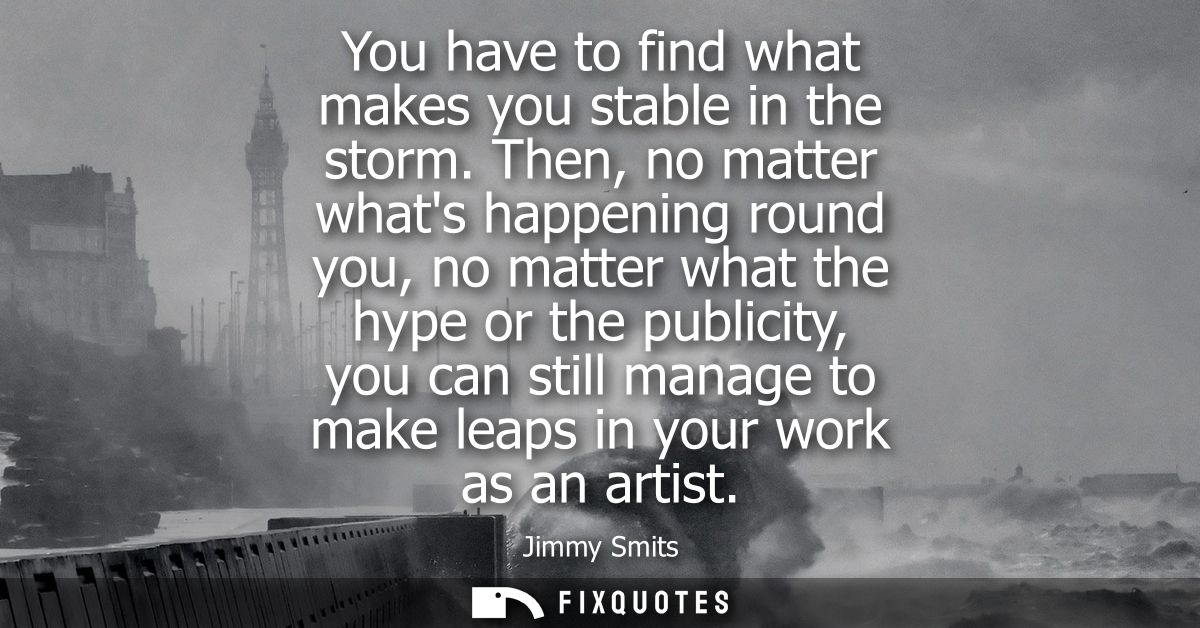"You have to find what makes you stable in the storm. Then, no matter what's happening round you, no matter what the hype or the publicity, you can still manage to make leaps in your work as an artist"
About this Quote
Stability is the artist’s keel. Storms will come, market swings, online chatter, awards seasons, trends that crown and discard in a week, but a grounded practice keeps the vessel upright. Stability here isn’t stasis; it’s a portable center you can carry anywhere: a set of values, rituals, and questions that hold when the external temperature changes. When that center is clear, praise doesn’t inflate and criticism doesn’t shatter. Both become weather, not destiny.
Hype and publicity are powerful crosswinds because they masquerade as direction. They can pull a creative life toward performance for others, toward speed over depth, novelty over necessity. Without ballast, attention becomes the metric and the work thins out. With ballast, attention is welcomed but not required. The focus shifts back to process: daily craft, honest inquiry, and the long conversation with one’s materials and themes.
Paradoxically, steadiness is what enables leaps. You jump farther when your footing is solid. The security of your core, your practice schedule, your community of frank readers, your commitment to revision, your reasons for making, frees you to risk the new form, the uncomfortable subject, the failure that teaches. Stability is not rigidity; it’s elastic resilience. It allows adaptation without losing the thread.
Practical anchors help: simple routines that begin work even when you don’t feel like it; boundaries around consumption of noise; reflective time to reconnect with purpose; embodied practices that settle the nervous system; a ledger of what you control and what you don’t. But the deepest anchor is an inner contract: to serve the work more than the audience’s momentary appetite, to serve the truth of the piece more than your image.
When the storm rages, the question isn’t how to calm the sea, but how to steady the hands at the tiller. From that steadiness, the artist can choose direction, and make real, improbable leaps.
More details
About the Author

